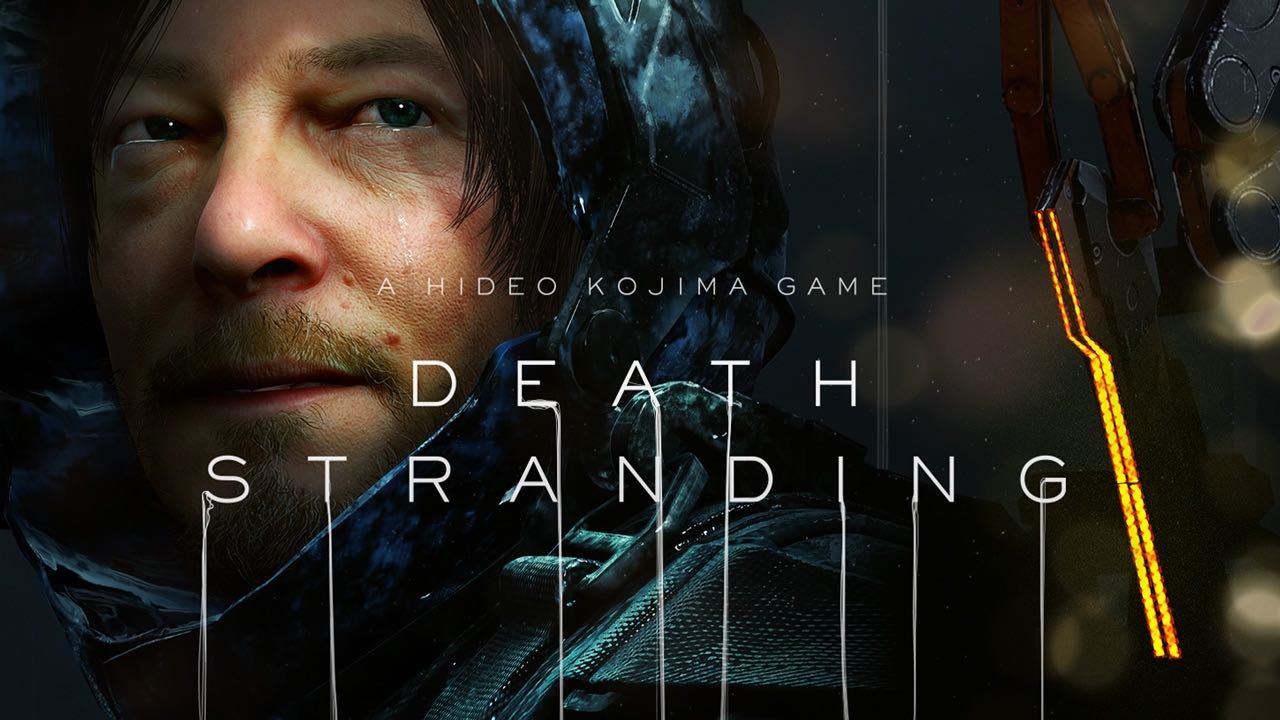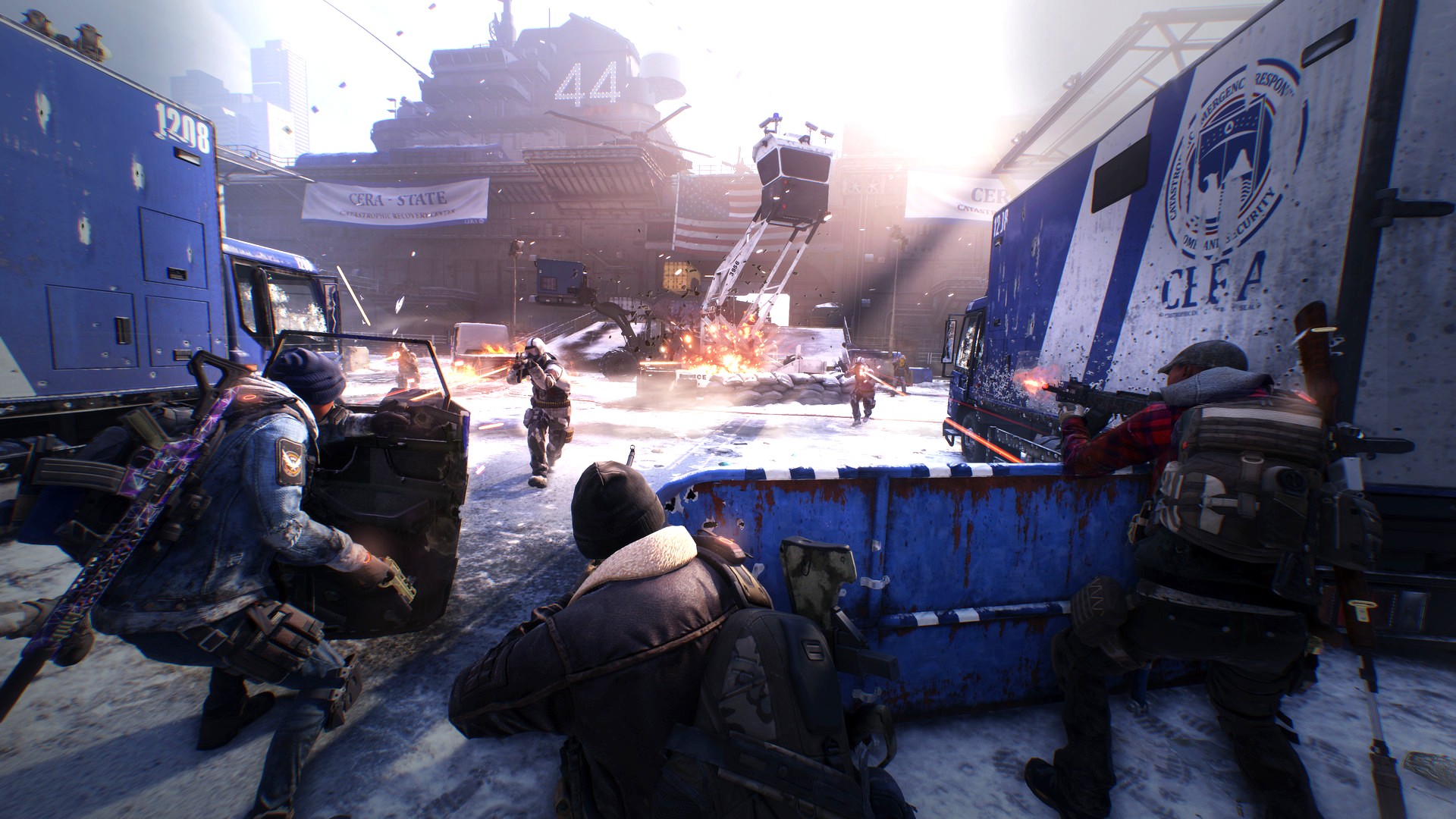When I received the code in my inbox for Death Stranding on PC, I'll admit I was excited to hop into the game again. I played it on PS4 back when it first came out and I spent weeks in its sprawling, dense, and sometimes obtuse world. There was something fascinating about it. It was partially the audacity of some of the narrative and gameplay elements — where else can you play a game where the main character's blood, urine, and feces creates weapons to take on dangerous ghosts — but it was also how pure it all was. Whether you like Hideo Kojima or not, you can't deny that this is a Kojima game down to its core.
That Kojima stamp means we were going to get a game that was both a technical masterclass, introducing new ideas on how games can integrate multiplayer and online connectivity, and had a story that was up to its neck in its own nonsense. Death Stranding was a game of its moment. It was something that could take advantage of the PS4 to create a visual spectacle while also innovating on what was already there with unique multiplayer cooperation.
As you walked across America (yes, that is a major plot point), you could see the capabilities of the PS4 in full bloom — the mountains rising in the distance, the river flowing around you as you crossed it, the snow crunching under your boots as you trudged uncomfortably to your destination. Players could see the intricacies in the mo-cap performances from the likes of Norman Reedus, Mads Mikkelsen, and Tommy Earl Jenkins. They could also feel the weight of everybody else playing with you since the game had a system of "likes" that allowed you to connect with your fellow players without the need for co-op strategizing or communicating.
To sum it up, Death Stranding is a lot of game. So while I was looking forward to playing it again on PC, I was hesitant. Would I want to play through all of it again? As it turns out, playing it on PC is not only a great experience, but it allows players to play it on a new platform, which actually highlights some of the game's greatest strengths. There are new sidequests and cosmetics in the PC version to incentivize players to pick it up, but it's worth playing again for two reasons: the power of PC as a platform and how the game is more timely than ever before.

Bottom line: Death Stranding came out in 2019 for the PS4, but the PC port looks to become the definitive version of the game thanks to improvements that make it playable across any type of machine. It's also, oddly enough, more relevant than ever.
Pros
- Runs smoothly
- Graphical improvements
- Playable on a variety of machines
- PC just might be better overall for experiencing the game
- New Half-Life/Portal crossover content
Cons
- Not super different from console version
The elephant in the room: Death Stranding is more relevant than ever
There were a lot of jokes made about Death Stranding when it first released in Nov. 2019. The premise of the game is confusing, and the details of how this world works are even more so. It posits a world where a horrible event called the Death Stranding caused everything to be overrun by dangerous ghosts called BTs, leading to the population flocking to cities or underground bunkers. The one thing keeping people together is a delivery system of porters that strap large crates to their backs and cross the dangerous landscape by foot. You play Sam Porter Bridges, a man whose new job is to reconnect America while also making deliveries.
| Category | GameNameXXX |
|---|---|
| Title | Death Stranding |
| Developer | Kojima Productions |
| Publisher | 505 Games |
| Genre | Third-person adventure |
| Operating system | Windows 10 |
| Minimum Requirements | See below |
| Game Size | 80GB |
| Play Time | 40+ hours |
| Players | Single-player |
| Launch Price | $60 |
Even just a few months after Death Stranding released, however, we realized that the game was more on the nose than we originally thought. As most of the world entered quarantine due to the COVID-19 pandemic, not only social distancing but remaining in their homes, it became apparent that we would have to rely on delivery people, gig workers, and online retailers to get what we needed. Sure the people at the heart of treating the illness (doctors, nurses, etc.) made all headlines, but a lot of people putting their lives and health on the line were those making deliveries.
There's also the connection aspect. The game utilizes a social media-esque like system where other players can give you "likes" based on the things you build. For example, if another player uses a ladder you left or liked a sign you placed, they can give you a number of likes. You don't get much by getting more likes beyond some tiny upgrades, but it's something that as a player, you long for. Just like on social media, validation of good deeds and work in Death Stranding is something you strive for even if it doesn't convert into any sort of currency. Our reliance on social media has also become stronger since the pandemic, meaning the communication in Death Stranding not only feels more relevant but also more in line with how we live day-to-day.
All the latest news, reviews, and guides for Windows and Xbox diehards.
This attachment to current events elevates Death Stranding, making its otherworldly and sometimes confusing story seem more palatable. The gameplay and technical aspects have always been its strong suit, not so much the story, which gets too caught up in worldbuilding details and repetitive exposition dumps to be truly relatable. Now there's a real-world connection that seems to change how we perceive the game entirely.
It's funny because nothing foundational about the game has changed in the eight months since its first release. It's just that the logic obstacle course players had to jump through to understand what Kojima was doing is now a lot easier to conquer. It also makes the message at the heart of the game more powerful. Despite any nonsense about umbilical cords and pre-historic evolution that characters tell you are key to understanding Death Stranding, it's a story about connections, and how the little things we do can have wide-ranging consequences. Even something as small as a package can make a person's day or give them hope for something better. It's a direct counter to many post-apocalyptic games where humanity is expected to be cruel, which might be what players could use.
This, in turn, might make the game appealing for those who've either never played it or might be thinking of a second playthrough.
Death Stranding: As smooth as you want it to be

As I wrote in my preview of the game, Death Stranding is a powerful game that needs a powerful system to run. Whatever you might think of the PS4 at the end of this current generation and how capable it was, it was a strong-enough system to run the game with minimal issues. I recall the game crashing maybe twice in the 40+ hours of gameplay and that was on my regular, close to first-generation PS4. I got 1080p and 30FPS with little issue, and that's usually enough for most people.
It's obvious that this game needs powerful tech to run. There's a lot of visual detail in both the landscape and in the close-up conversations between characters and it all needed to be rendered smoothly. The player as Sam needs to be able to run across the land without worrying about assets loading in as he goes. There need to be obstacles in his path so that walking feels as inconvenient as it actually is. You need to be able to see the minutiae in the mo-cap actors' performances or there wasn't a point in casting all the top-tier talent to deliver monologues or heavy exposition.
Therein lies the main problem with Death Stranding on PC: You can only play it if you have the proper specs. You can see them below.
| Category | Minimum Specs (30FPS) | Recommended (60FPS) |
|---|---|---|
| Operating System | Windows 10 | Windows 10 |
| Processor | Intel Core I5-3470 or AMD Ryzen 3 1200 | Intel Core I7-3770 or AMD Ryzen 5 1600 |
| Graphics | GeForce GTX 1050 or AMD Radeon RX 560 | GeForce GTX 1060 or AMD Radeon RX 590 |
| Memory | 8GB | 8GB |
| Direct X | Version 12 | Version 12 |
For reference, I have a PC with an Intel i7-9700K CPU, 16GB of RAM, and an NVIDIA GeForce GTX 1660. They're not the most top-tier specs, but they get the job in most cases. On the Death Stranding build I played for review (which was not the final one), I did experience some performance lag and some crashes. I had to put settings mainly on medium in order to get the game to run for more than a few seconds.
The amount of options for the PC port means it's easier than ever to hit a place where you feel comfortable playing.
Luckily the game, which is running on Guerilla Games' Decima Engine on PC, still looks incredible even on lower settings. Even on my settings, I could admire a looming mountain in the distance and if I set my mind to it, I know I could walk over to and climb that mountain. I didn't see any assets loading incorrectly or slowly, nor did I see much difference in the details and textures. There was maybe less grass in some areas, but I didn't feel taken out of the world at all. Water still flowed, rocks were still plentiful enough to trip me up, and trees were still properly tree-like. This was also the case with the console version, so it's nice to see how well the game runs transitioned over to PC.
An interesting feature that I played around with quite a bit was in the frame rates, which could be adjusted all the way up to 240FPS. This made the game when I first booted it up look like a soap opera when you weren't in cut scenes — good ol' motion smoothing. This is most readily apparent when Sam moves. A smooth frame rate is important for ensuring that he moves the way you want to. It makes his walking more realistic, but it also allows the player to properly react when he trips or when he needs to adjust his balance. I put it on 120FPS during my run, and while sometimes his movement felt too smooth, it did give me the advantage I needed to not damage any deliveries with my clumsiness.
So while most players won't notice a huge difference between 30 and 60FPS, the amount of options for the PC port means it's easier than ever to hit a place where you feel comfortable playing. It's also much easier to get to 60FPS, for instance, since even I was able to reach it easily on my mid-tier setup. Other options like the ability to use NVIDIA's DLSS (if you have a compatible graphics card) or FidelityFX CAS (if you don't) allow even lower-tier machines to reach comparable performance. It all ensures that no matter your machine, you can play the game, and sometimes even get spectacular performance as a result.
Playing Death Stranding on PC is to play it in its utmost form

This all leads to why I think that the PC might be the best platform for Death Stranding. It might be the most difficult to play the game on because of how much of your system it demands, but because of how most of us play on PC, the risks are worth it.
I've been thinking a lot about how we play on PC vs. console can change our perspective. I spoke with developer Sam Barlow about Telling Lies, originally on PC, hitting consoles, and how that platform change can twist how the player engages with the scene. It's a game about eavesdropping on intimate conversations, and he noted how watching them play out a computer monitor was completely different than doing it on a TV.
I was wowed by the game on PS4, but even more so now that I was seated directly in front of my monitor instead of a TV across the room.
I had that in mind while I was playing Death Stranding on PC. I was wowed by the game on PS4, but even more so now that I was seated directly in front of my monitor instead of a TV across the room. I could pick out the details on the cryptobiotes, for example, and how the bugs' design is actually filled with a texture that makes eating them feel grosser. It was much easier to see rocks in the distance that I could swerve to avoid. I could pick out the subtleties in the actor's performance better, whether it's a change in their mood just by the look in their eyes or a slightly off piece of body language that reveals more about them before their backstory dump does.
On a more concrete level, there's also the difference between a mouse and keyboard and a controller. Death Stranding has a lot of inputs to remember, and with a keyboard, you have more options for key binding. This could be confusing for some, but I found myself being able to remember the controls easier on a keyboard since I could have a button for everything I wanted to do, which isn't exactly the case with a controller. The PC version does allow you to play with a controller though, so you can still play whichever way feels more comfortable.
A lot of whether you'll buy Death Stranding or PC obviously comes down to platform preference, but there's something to be said about being just a few inches from the action on your computer monitor, to notice all the tiny details that were key to this game, that makes the PC port special. The fact that the game can be run on a lot of machines despite the high specs required means it can reach even more players.
There are a couple content differences between the two versions. The PC one has the Valve crossover content, which includes cosmetics, sidequests, and a little backstory that ties both Valve and the world of Death Stranding together. They don't change up much of the foundation of the game, but some of the cosmetics are fun, and you get a version of the Gravity Gloves that allow you to pick up objects up to 15m away.
Bottom line: Should you buy Death Stranding on PC?
I can understand not wanting to get back into Death Stranding, especially if you're played it already. It's a huge game in terms of the size of the landscape you have to cross, the scope of the narrative, and just how long it is. It's heavy and dense, and for some, the story might come across as too nonsensical to be worthwhile.
However, The game has only become more relevant in the eight months since its initial release on the PS4, and therefore comes off differently. The PC port also manages to make it fairly easy to play, even if you don't have the most powerful machine. Whether you want to experience it for the first time or want to replay it on a different platform (the Half-Life and Portal tie-ins on PC don't change a lot of the game's foundation, but are charming nonetheless), there's something here for you.

Carli is the Former Gaming Editor and Copy Chief across Windows Central, Android Central, and iMore. Her last name also will remind you of a dinosaur. Follow her on Twitter or email her at carli.velocci@futurenet.com.

